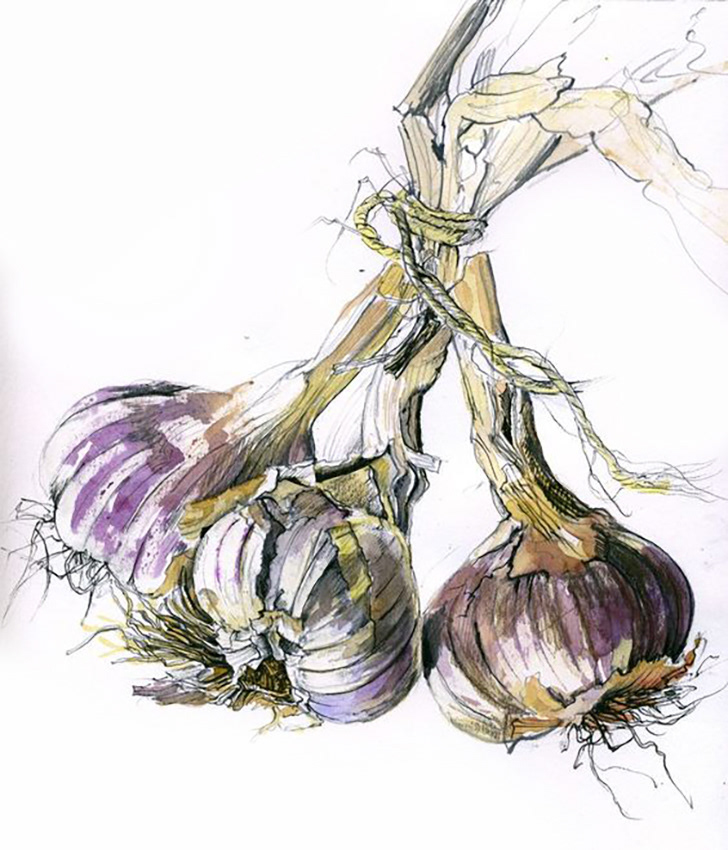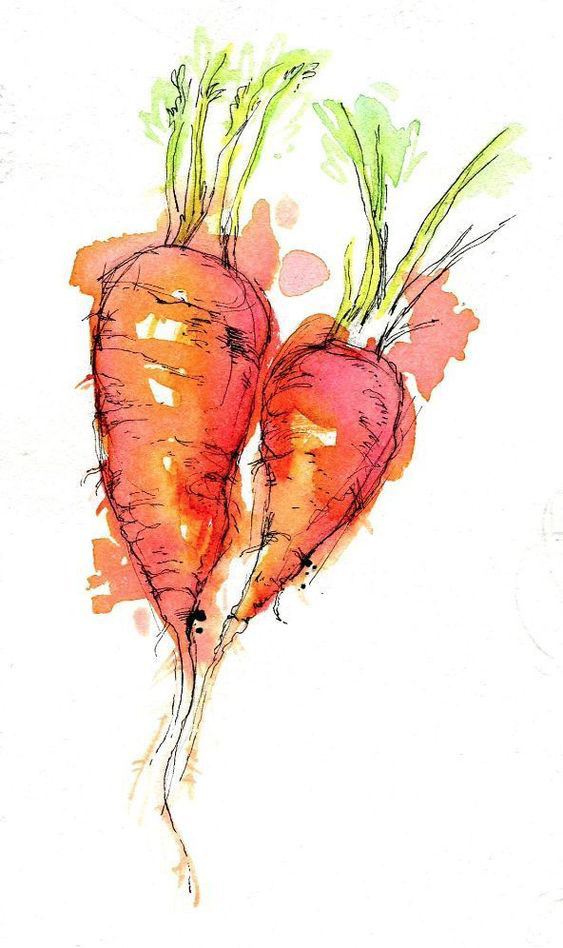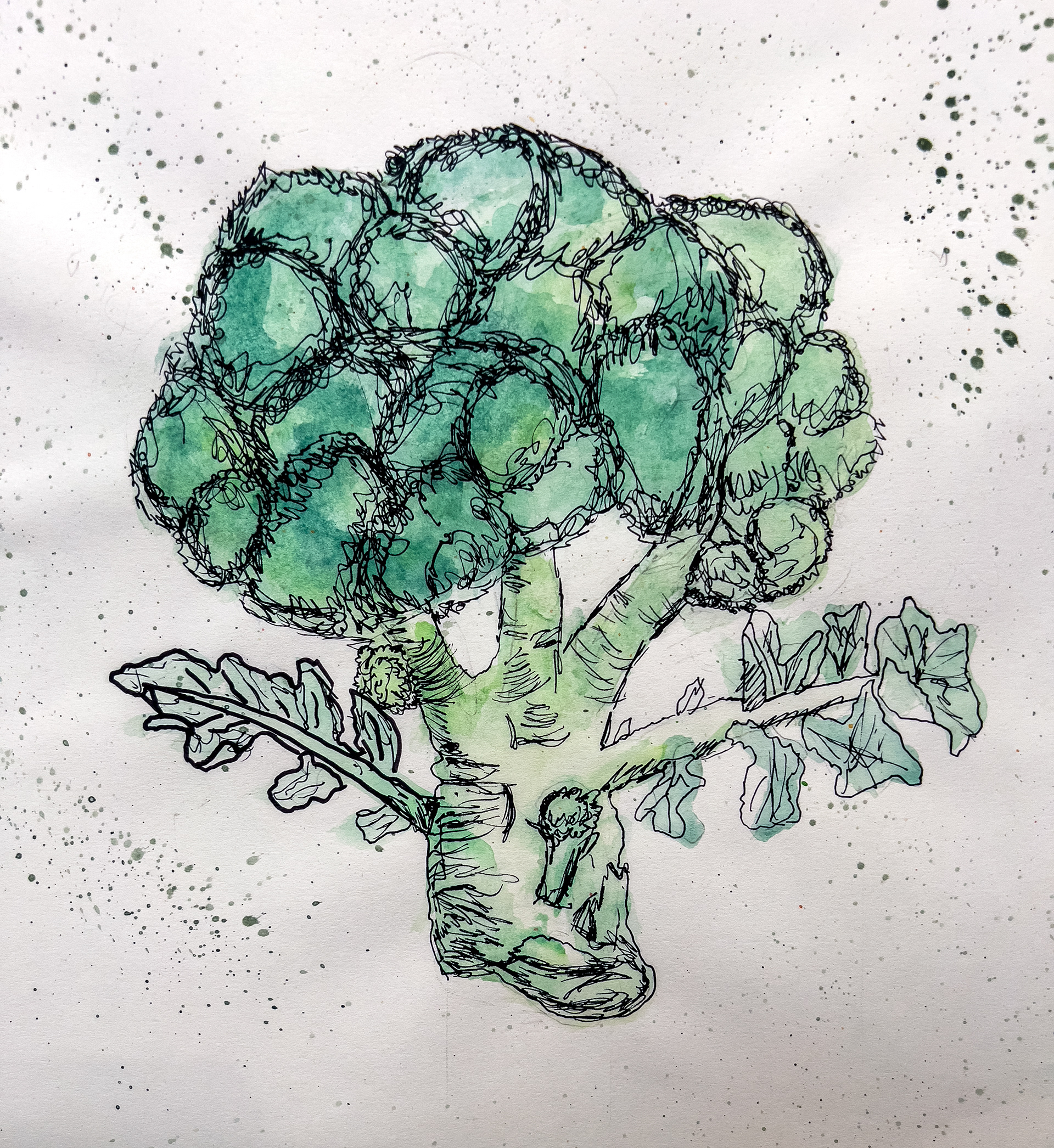Learning Objectives:
• Experiment with mixed media, combining watercolour with fineliner pen
• Creatively develop new and experimental techniques
• Refine watercolour painting techniques learnt in previous lessons
• Creatively develop new and experimental techniques
• Refine watercolour painting techniques learnt in previous lessons
What you will need:
Cartridge paper (or your sketchbook), a soft pencil (preferably 2B or 4B), eraser, pencil sharpener, watercolours, a small brush, a pot of water, a paper towel and a fineliner pen.
Your Task:
1. Watch the video below
2. Find a piece of veg or download one of the reference images below
3. Lightly sketch the outlines of your veg in pencil
4. Add colour to your fruit using watercolours. Try to use some of the techniques you experimented with last lesson. Start with the lightest background colours and layer up darker colours and details on top.
5. Add outlines in pen, following the tips shown in the demo video below.
2. Find a piece of veg or download one of the reference images below
3. Lightly sketch the outlines of your veg in pencil
4. Add colour to your fruit using watercolours. Try to use some of the techniques you experimented with last lesson. Start with the lightest background colours and layer up darker colours and details on top.
5. Add outlines in pen, following the tips shown in the demo video below.
Demo Videos:
The outlines:
Adding watercolour and fineliner pen:
Mr Lax's example:
Reference images:











Top Tips
• Add a bit more water to your paint than usual so that it flows better on the page
• Experiment with a 'wet-on-wet' technique whereby you layer colours on top of sections that are still wet. This makes it easier to blend
• Keep the watercolour sections quite simply
• Draw with quite a loose, expressive style when adding the black lines in pen
• Try to vary the thickness of your lines
• It's OK for your black lines to start and stop. It shouldn't be a continuous line throughout the whole drawing
• Don't scrub at the surface of the page, as it can cause it to rip (you will see small bits appear gradually)
• Experiment with a 'wet-on-wet' technique whereby you layer colours on top of sections that are still wet. This makes it easier to blend
• Keep the watercolour sections quite simply
• Draw with quite a loose, expressive style when adding the black lines in pen
• Try to vary the thickness of your lines
• It's OK for your black lines to start and stop. It shouldn't be a continuous line throughout the whole drawing
• Don't scrub at the surface of the page, as it can cause it to rip (you will see small bits appear gradually)
Examples of previous students' paintings:
What do you think has gone well and what could have been improved?




